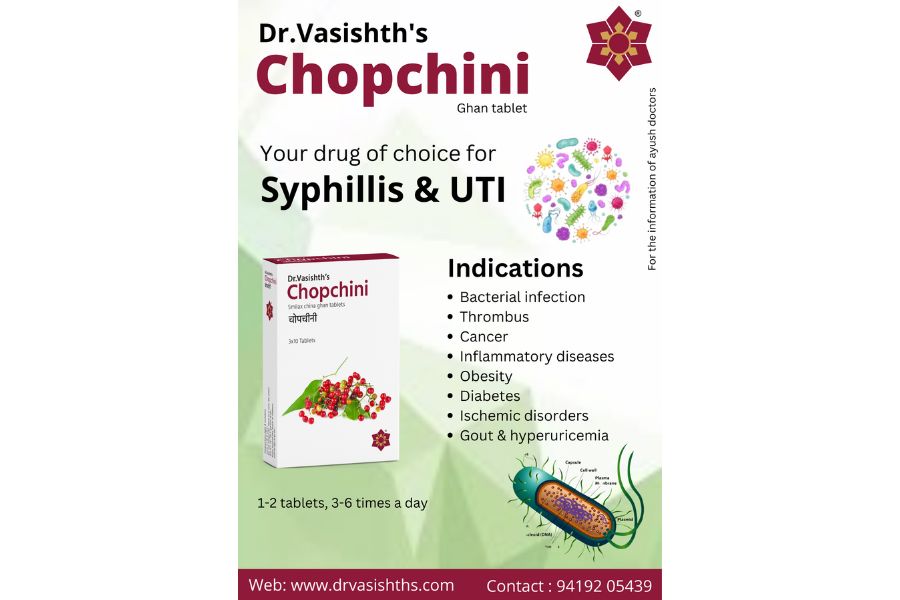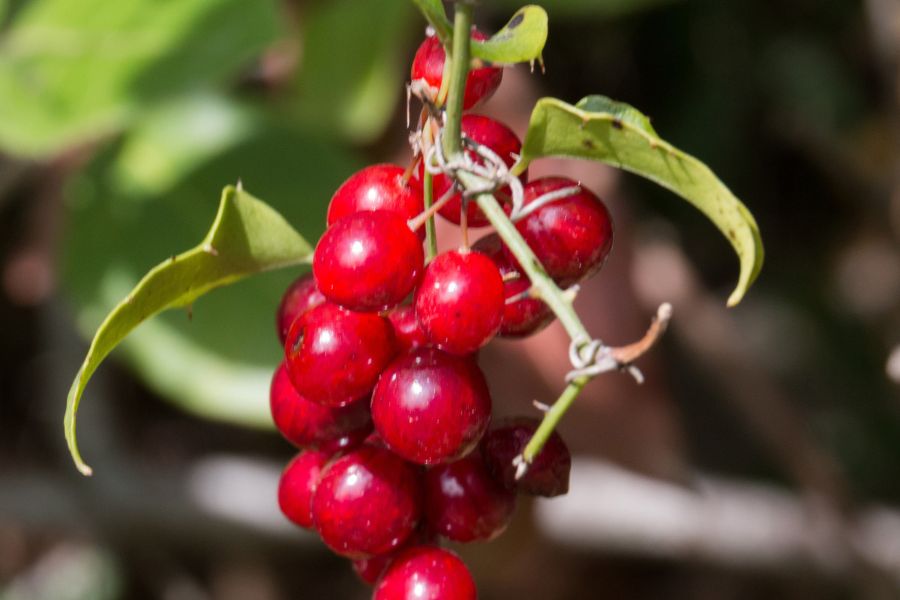Chopchini is a climber. It originated in China and Japan. In India, it is found in Eastern Himalayas. It is widely used for the management of bacterial infections, especially syphilis, and UTI. Its active constituents – Shikimic acid, Ferulic acid, and Smilaxin. Its rhizome is used for medicinal purposes.
ACTIONS & USES:
Chopchini has the following major pharmacological actions and therapeutic uses –

- Bacterial infections: Chopchini has been used to manage bacterial infections for a long. It probably acts by inhibiting the multiplication of bacteria by the destruction of the bacterial cell wall and cell membrane. It is thus useful in various types of bacterial infections, especially in the urinary tract, skin, pelvic organs, prostate, etc.
- Thrombus: Chopchini helps in thrombolysis probably by activating plasminogen that further dissolves fibrin meshwork. It can be used to prevent and manage thrombi.
- Cancer: Research shows that some active principles in Chopchini possess strong anti-cancer activity. It can therefore be used as a supportive drug in anti-cancer therapy.
- Inflammatory diseases: Chopchini has been seen to alleviate inflammation, probably by inhibiting inflammatory mediators. As a result, it is useful in managing inflammatory diseases.
- Obesity: Chopchini has been seen to reduce excessive body fat probably through its pancreatic lipase inhibition, anti-adipogenic, and lipolysis effects. It is thus quite useful in reducing body weight in obese/overweight people.
HOW TO USE?

Chopchini could be used as –
- Chopchini ghan tablet 600 mg (= 3 gm Chopchini rhizome powder) – Start 1-2 tablets, 3-6 times a day, depending upon the severity of the disease and the body weight of the patient. On improvement taper the dose and bring it to the minimum dose required. To be taken just after meals with plain water.
PRECAUTIONS
Nothing specific. Largely safe for long-term use.

